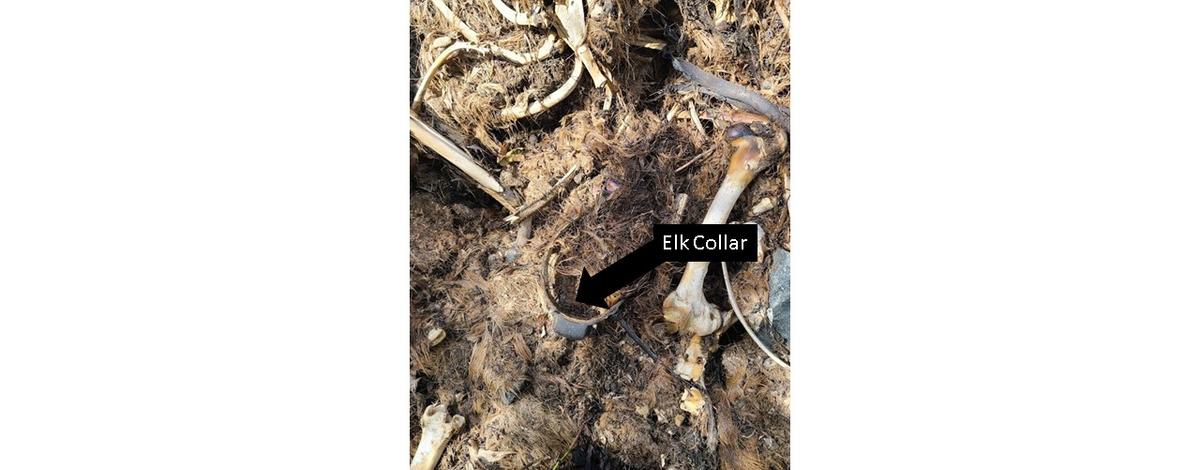Idaho Fish and Game uses data from radio collars to get a better understanding of wildlife survivability. Data generated from the GPS collars give wildlife staff the ability to track where collared individuals are located, their movement patterns, and potentially where and, in some cases, how they die. When an animal is suspected to have died, Idaho Department of Fish and Game staff goes to the site of the last location and gathers data to determine cause of death.
Elk is one of the wildlife species monitored on Craig Mountain WMA, in game management unit 11. Earlier this year, a mortality signal was received from a radio collared elk on Craig Mountain. With the data and GPS location provided by the collar, wildlife staff were able to navigate to the location of the collar. When wildlife staff arrived at the location of the radio collar they discovered the surprising but unfortunate story of what had occurred. With scree material and boulders up to the size of beach balls, it appeared that at least 15 elk were traversing and side hilling near the top of a ridgeline only to be caught up in a landslide. Bringing them down almost 1,000 feet over just a distance of 300-400 yards, this group of elk was caught up in rubble and snow ultimately resulting in death.
Thorough investigation through rock and debris allowed Idaho Fish and Game staff to gather data from 4 recovered radio collars. Natural events such as avalanches and rock slides often occur without being observed and it is generally unknown how these events influence wildlife. This event provides evidence that natural events such as this can influence a wildlife population. Collars placed on multiple species across the state over the span of months and years, allow Idaho Department of Fish and Game to inform management decisions on preserving, protecting, and perpetuating wildlife for continued use and enjoyment of the public.

